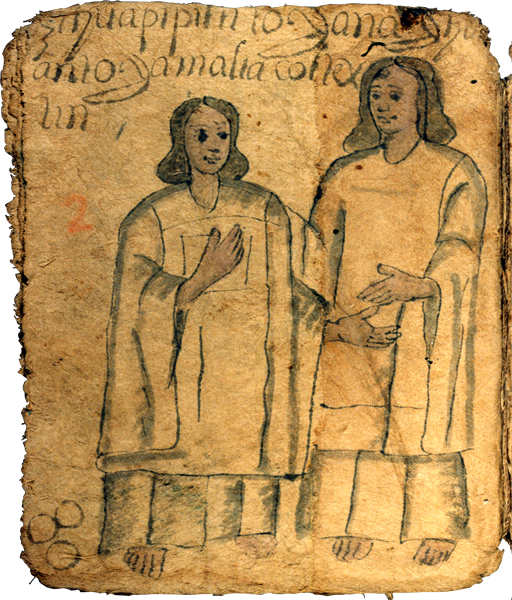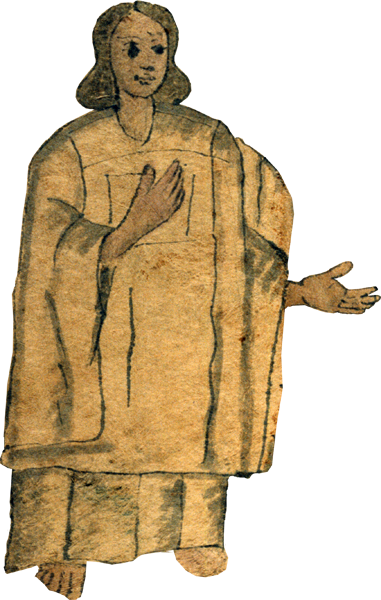Bk. V, f. 1v., indigenous woman standing (colonial attire)
This is a detail, appearing in Book V, folio 1 verso, of an indigenous woman standing, possibly doña Ana Cortés. She is outlined in black. Her skin is washed with a flesh-tone watercolor. She is dressed in what appears to be white cotton clothing, with a long tunic over a floor-length skirt. She and her clothing are outlined in black. Some shading appears on her arms and shoulders, and marking the draping of the cloth. The tunic of this woman has a rectangle below the v-neck, suggesting it is the blouse of an indigenous woman, which we are certain she is. The woman’s toes appear below her skirt; her feet appear to be bare. With her hands, she gestures; the right hand near her heart and the left extended out. The woman’s hair reaches her shoulders, and appears curled under at the bottom. The hairstyle does not include the bumps at the top of the head that was a hallmark of sedentary pre-Columbian hairstyles for Nahua women. [SW]
una mujer indígena de pie (era colonial)
Detalle de una mujer indígena de pie, posiblemente doña Ana Cortés. Su piel está pintada en una acuarela similar al color de la piel.
Viste lo que parece ser algodón blanco, con una túnica larga como falda. Están delineadas en negro. Alguna sombra aparece en sus brazos y hombros, y también marcando las arrugas de la ropa. La túnica de la mujer tiene un rectángulo debajo de un cuello en forma de V, sugiriendo que es la blusa de una mujer indígena. Los dedos del pie aparecen por debajo de la falda y sus se encuentra descalza. Gesticula con sus manos; la mano derecha cerca del corazón y la izquierda extendida. Su pelo llega a la altura de los hombros, rizado en la parte inferior. El peinado no incluye el jopo en el centro de la cabeza, caracteristica de las mujeres Nahuas en el período precolombino.

